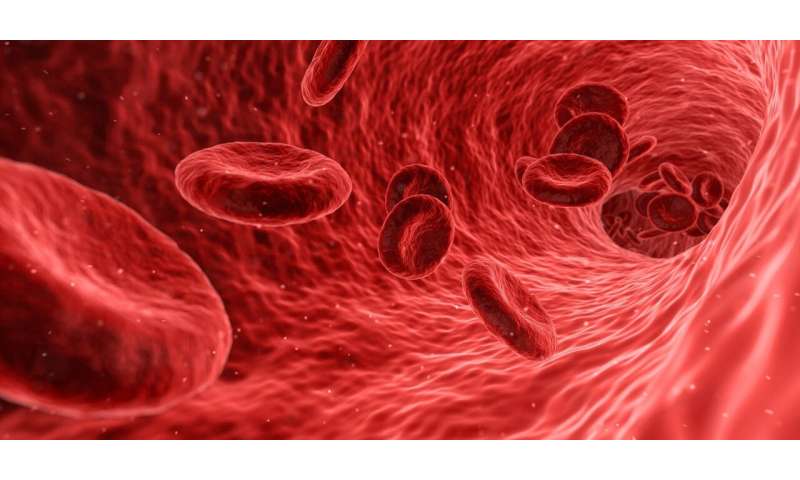
Researchers at UCL have developed a new way to make blood stem cells present in the umbilical cord ‘more transplantable’, a finding in mice which could improve the treatment of a wide range of blood diseases in children and adults.
Blood stem cells, also known as haematopoietic stem cells (HSCs), generate every type of cell in the blood (red cells, white cells and platelets), and are responsible for maintaining blood production throughout life.
When treating certain cancers and inherited blood disorders, it is sometimes necessary to replace the bone marrow by allogeneic stem cell transplantation—which involves using stem cells from a healthy donor.
The umbilical cord is a useful source of blood stem cells, and cord blood transplants lead to fewer long-term immune complications than bone marrow transplants. Although umbilical cord transplants have been used in young children for the last 30 years, most cord blood units contain insufficient HSCs to be suitable for older children and adults and 30% of all units contain too few even for the youngest children, and go to waste.
The study, published in the journal Cell Stem Cell, highlights how a protein called NOV/CCN3, which is normally found at low levels in the blood, can be used to rapidly increase the number HSCs in single umbilical cord blood units that are capable of transplantation. This finding potentially opens the door to units that would otherwise be discarded being made available for patients of all ages.
“Trying to increase the actual number of hematopoietic stem cells in umbilical cord blood is both expensive and challenging. It is known that not all HSCs present in a cord blood unit can or will transplant, indicating that cord blood units have untapped transplantation potential,” explained Dr. Rajeev Gupta, Clinical Associate Professor at UCL Cancer Institute and first author of the study.
“We explored an alternative approach to harness this potential by increasing the functionality—rather than the number—of HSCs, and so enhance the ability of umbilical cord blood units to transplant.
“We’d previously discovered that a regulatory protein known as NOV is essential for the normal function of human HSCs, and so we asked whether highly purified NOV might be used to manipulate cord blood HSCs to make them more transplantable.”
Using cell cultures and mouse models in the lab, the research team at UCL Cancer Institute found that umbilical cord blood units exposed to NOV showed significantly more transplantation potential than regular samples. In fact, the frequency of functional HSCs in the sample increased six-fold. Strikingly, these effects were achieved with only an eight-hour exposure.
“Using NOV, we’ve shown that we can rapidly manipulate blood stem cells to alter their state—changing non-functioning HSCs to functioning HSCs—which enhances cord blood engraftment potential. This finding offers a new strategy for improving blood transplants. The next stage will be to take our research into a clinical setting to explore how this can benefit patients with blood cancers and other blood disorders,” said Dr. Gupta.
Commenting on the study, Professor Alejandro Madrigal, Scientific Director of the Anthony Nolan Institute, and a world-leading scientist in the field of stem cell transplantation, said: “Cord blood transplantation has been shown to improve engraftment and provide a better outcome for many people. However, unfortunately, stem cells numbers in many cord blood units might be inadequate for optimal transplantation.
“This research is extremely encouraging, since with the simple addition of NOV/CCN3, there is an increase in the functionality of existing stem cells.
Source: Read Full Article
